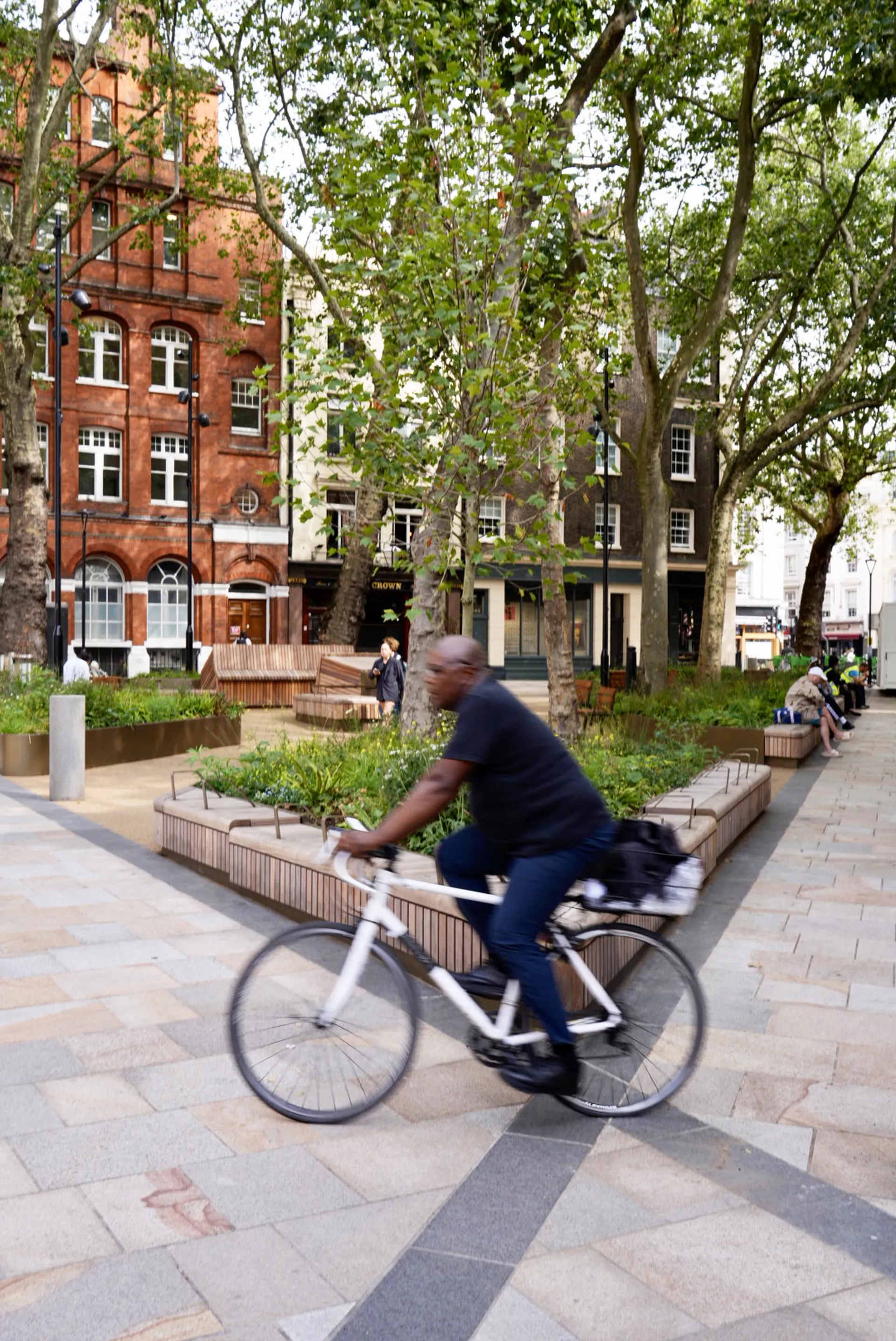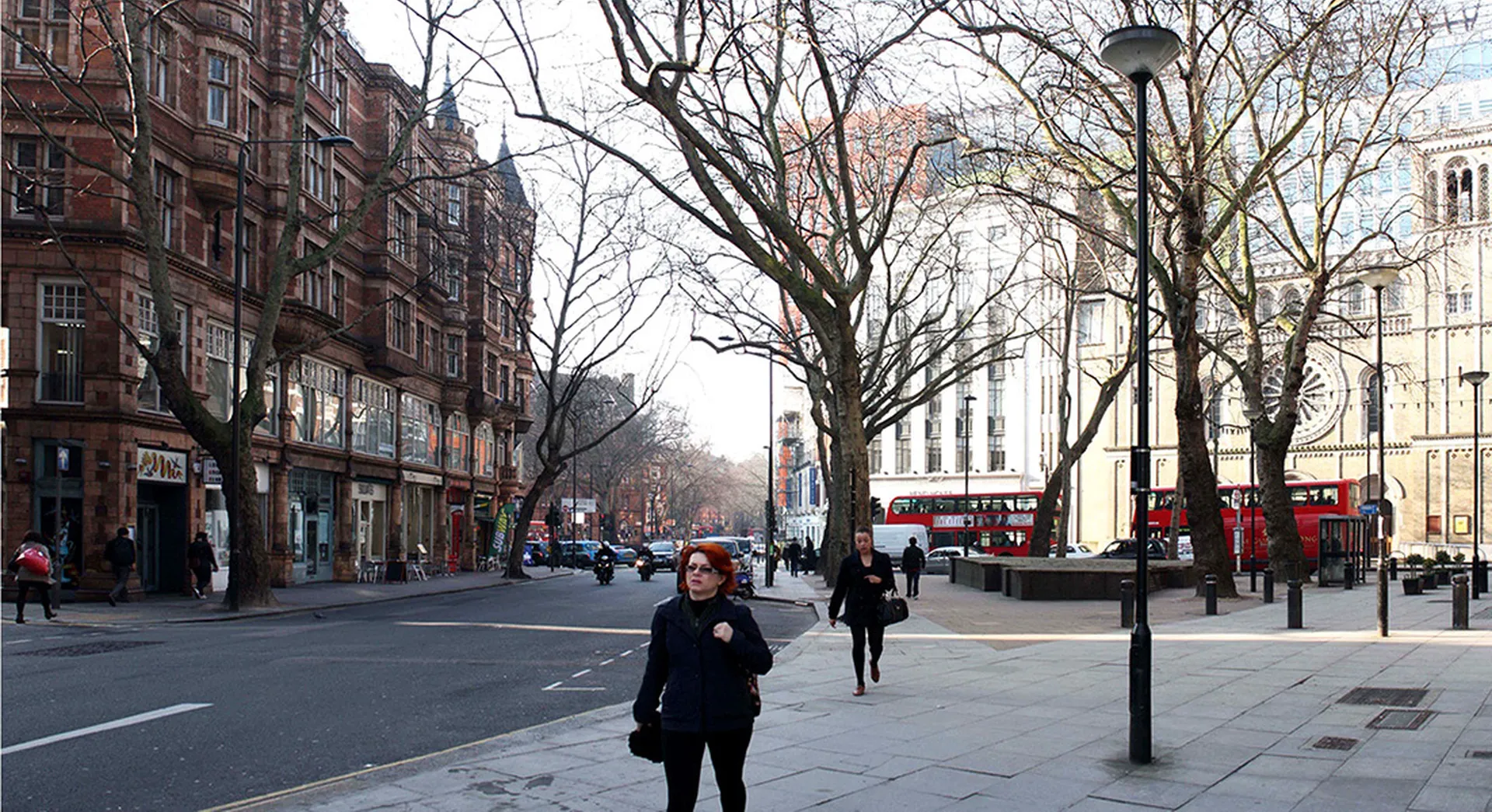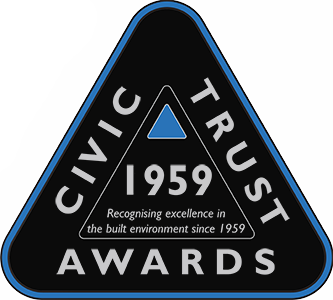
West End Project
Camden, Greater London
Special Award for Sustainability
Exemplary project which demonstrates excellent sustainability credentials in terms of overall design parameters, material selection, construction methods and long-term energy consumption. Sponsored by Derwent London
The ambition behind the West End Project (WEP) was to create greener, healthier, biodiverse areas around Tottenham Court Road, supporting active travel and turning grey to green by reclaiming road space to create a new park and a super-green ‘woodland’ public square. The project demonstrates the benefits of thinking at scale, with new habitats and green networks created, vital for nature recovery, greater climate resilience and to reduce the urban heat island effect. Materials were sourced sustainably and from the UK, where possible and chosen for durability, sustainability and ease of repair. Traffic on Tottenham Court Road has been reduced by up to 70% during the day, with cycling and walking up. Air quality has improved with NO2 levels 34% lower on Tottenham Court Road and 37% lower on Gower Street than in 2018. The project also contributes to London as a sponge city by expanding soft landscape areas to an area of 1,134m2, planted with a total of 8,292 herbaceous new plants and 13,252 bulbs, a mix of flower-rich natives and non-natives to improve biodiversity, pollination and bio-resilience. Overall, 59 new trees have been added to the 77 mature trees retained and celebrated. Studies into microclimate, responding to the pressures of climate change and Camden’s Biodiversity Action Plan have guided an attractive, practical planting plan.
In Whitfield Gardens mature trees have been retained and enhanced with a woodland understorey. There is nature-based sustainable drainage, permeable paving and bird and bat boxes. In total, there are six new trees, and nine mature plane trees retained, plus 1,944 new plants, 2,060 new bulbs, 230m2 of soft planting, 410m2 of permeable paving. Routes are lit by columns from dusk to dawn, but decorative lighting is turned off at 11pm to conserve energy and to minimise light levels to protect ecology and wildlife.
Alfred Place Gardens provides substantial planting where there was none and significant biodiversity net gain. Planting is low maintenance, climate resilient, attractive and in alignment with Camden’s BAP. Non-toxic, biodegradable moisture retention gels in the soil act as miniature reservoirs while surface water percolates through paving to borders when rainfall is heavy forming a new water catchment area. The design features three distinctive areas starting in the north with a woodland walk and winding spaces under a dense canopy, moving on to a playful space under dappled shade and then finally to a lawn, with space for community events. All twelve mature trees have been retained and joined 20 new trees, 4,226 new plants, just under 9,000 new bulbs, a planting area of 388m2, and just over 300m2 of permeable paving which behaves as a soft landscape. New bike stands and Santander docking stations support active travel.
Princes Circus planting creates a sense of refuge in a busy area. The northern plaza features a woodland glade with lush, green foliage punctuated with bright white, pink and purple flower heads. The planting here is suited to lower light levels and is drought tolerant. Planting in the Southern Plaza is suited to full sun and is designed to create a sense of enclosure from busy Shaftesbury Avenue behind. A mix of native and non-native plants form a seasonal matrix that is tolerant of water stress, is biodiverse to support pollinators and is capable of withstanding sudden deluges. There are 12 new trees, 21 retained trees, 1,370 new plants, 1,710 new bulbs, 220m2 of soft landscape and 509m2 of permeable paving. The lighting for Princes Circus is distinctive and welcoming, helping to support local businesses including the Shaftesbury Theatre. Hidden projectors create the magical feeling of a dappled forest floor.
“In tackling climate change not only do we have to address the resilience and efficiency of our brick-and-mortar assets, but we also need to ensure we are adapting the wider built environment to promote nature recovery and build better climate resilience.
The West End Project stood out in this year’s entries because of its bold ambition to tackle the urban greening challenge across multiple sites across Camden, taking back the hard urban landscape and re-introducing nature. Benefiting not only the air quality across the borough but also bringing people closer to nature.
This is a highly worthy winner and a model template for the rest of London and other cities in the UK”
John Davies
Head of Sustainability
Derwent London




















Photography Credits & Captions
Neil Speakman, Mickey LF Lee & Mike Massaro
Overall Result
Special Award
Award Name
Special Award for Sustainability
Application Type
Large / Mixed Use Class
Primary Use Class
Sui Generis
Secondary Use Class
Sui Generis
Credits
Client
Camden Council
Landscape Architect
LDA Design
Engineer
Arcadis
Project Manager
Norman Rourke Pryme
Cost Consultant
Norman Rourke Pryme
Lighting Design
Michael Grubb Studio
Main Contractor
id verde
Business Improvement District
Central District Alliance
Business Improvement District
Fitzrovia Partnership
Early Strategy
DSDHA
